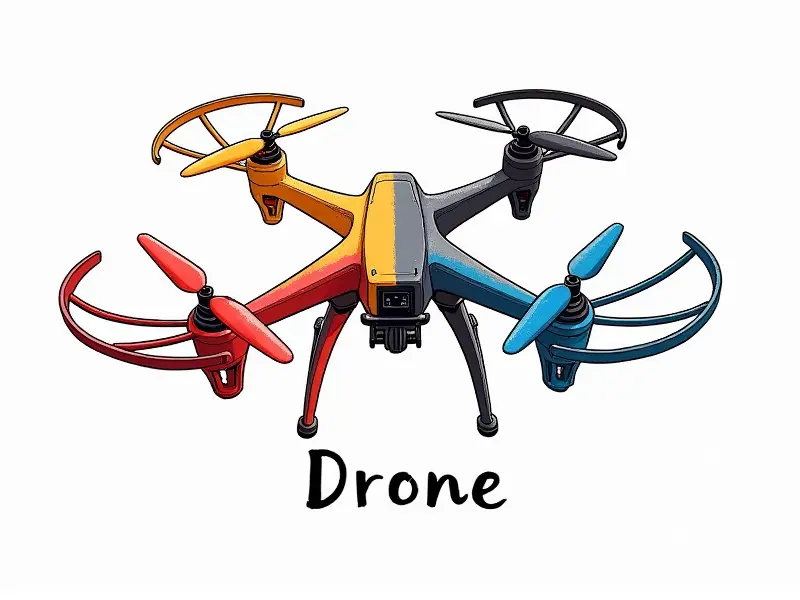How does a RC helicopter work?

How Does an RC Helicopter Work?
Remote-controlled (RC) helicopters are marvels of engineering that combine mechanics, aerodynamics, and technology to offer a thrilling flying experience. This article delves into the intricate workings of these miniature aircraft, providing a comprehensive understanding for both beginners and enthusiasts.
Inside the Mechanics of RC Helicoptors
The inner workings of an RC helicopter involve several key components that work together seamlessly:
- Main Rotor System: The main rotor is responsible for lift and directional control. It consists of blades, hub, swashplate, and pitch control mechanism.
- Tail Rotor System: The tail rotor counteracts the torque generated by the main rotor to maintain stability and yaw control.
- Electronic Control Unit (ECU): This unit processes signals from the remote transmitter and controls the servos that manipulate the helicopter's pitch, roll, and yaw.
- Battery: Provides power for all electronic components including motors and control systems.
How Do RC Helicopters Really Work?
To understand how an RC helicopter functions, it’s essential to comprehend the interplay between mechanical parts and electronics. When a pilot manipulates the remote transmitter:
- Pitch Control: The swashplate adjusts blade pitch angles to control lift and directional movement.
- RPM Regulation: Electronic speed controllers adjust motor power to maintain rotor RPM, ensuring stable flight.
- Tail Rotor Adjustment: Servos move the tail rotor blades to counteract yaw effects caused by main rotor torque.
Understanding RC Helicopter Aerodynamics
Aerodynamic principles are crucial for RC helicopters. The main rotor blades generate lift through their angle of attack and rotation speed, while the tail rotor controls horizontal movement:
- Lift Generation: Lift is created as air flows over the curved surface of the rotor blade, resulting in lower pressure above and higher below.
- Torque Compensation: The tail rotor counteracts the torque from the main rotor to prevent unwanted yaw movement.
Breaking Down RC Helicopter Technology
The technology behind an RC helicopter is multifaceted, involving advanced electronics and mechanical systems:
- Servo Motors: High-torque servo motors control the swashplate mechanism for precise pitch angle adjustments.
- Gyroscope Sensors: Gyroscopes stabilize flight by detecting angular velocity changes and adjusting rotor blade angles accordingly.
- Battery Technology: Lithium polymer (LiPo) batteries offer high power density, critical for long-lasting flights.
RC Helicopter: A Closer Look at Its Functionality
The functionality of an RC helicopter is a result of intricate mechanical and electronic integration:
- Main Rotor Pitch Control: Pilots adjust the pitch angle to change lift or direction.
- Tail Rotor Yaw Control: The tail rotor adjusts yaw movement, preventing unwanted spin.
- Pitch Linkage System: Precise linkage ensures smooth and responsive control of blade pitch angles.
Exploring the Inner Workings of RC Helis
The inner workings of an RC helicopter involve a complex interplay between mechanical components, electronic controls, and aerodynamic principles. Understanding these elements is crucial for effective operation:
- Mechanical Components: The main rotor system, tail rotor system, and pitch control mechanism work in tandem to achieve flight.
- Electronic Controls: Servos and the electronic speed controller manage blade angles and motor RPMs for stable operation.
Demystifying RC Helicopter Mechanics
The mechanics of an RC helicopter can be challenging to grasp, but breaking it down into its basic components makes it easier to understand:
- Rotor Blades: The curved shape and angle of attack are critical for lift generation.
- Swashplate Mechanism: This system adjusts blade pitch angles to control lift and direction.
RC Helicopter Basics for New Pilots
New pilots should familiarize themselves with fundamental concepts before attempting flight:
- Flying Techniques: Learn basic maneuvers such as hover, forward flight, and turns to gain confidence.
- Maintenance Tips: Regularly inspect rotor blades, servos, and batteries for optimal performance.
Understanding RC Helicopter Dynamics
Dynamics play a crucial role in the operation of an RC helicopter. Pilots must understand how different forces interact to maintain control:
- Lift vs. Weight: The lift generated by the main rotor must counteract the weight of the aircraft for stable flight.
- Torque and Yaw: Managing torque effects through tail rotor adjustments is essential for maintaining directional stability.
Secrets of RC Helicopter Operation
Mastering the operation of an RC helicopter requires a deep understanding of its intricate mechanisms:
- Advanced Control Systems: Modern helicopters feature sophisticated electronics and sensors for improved performance.
- Flight Dynamics: Understanding lift, drag, thrust, and weight is crucial for mastering flight techniques.
Unveiling the Technology in RC Helicopters
The technology behind RC helicopters encompasses various cutting-edge innovations that enhance their performance:
- Servo Feedback Systems: Advanced servos provide real-time feedback to improve precision and responsiveness.
- Battery Management Systems (BMS): BMS ensures optimal battery health and longevity, critical for extended flights.
Conclusion
RC helicopters are sophisticated machines that combine intricate mechanical systems with advanced electronics to provide an exhilarating flying experience. By understanding the mechanics, aerodynamics, and technology involved, pilots can better appreciate these miniature marvels of engineering and achieve greater control over their flights.

